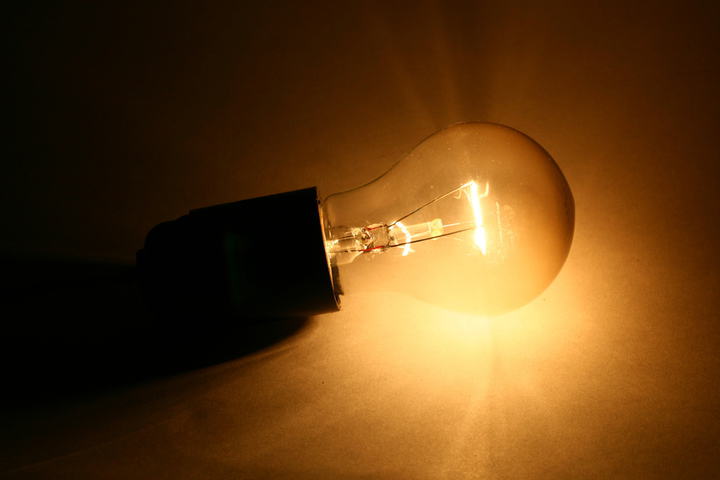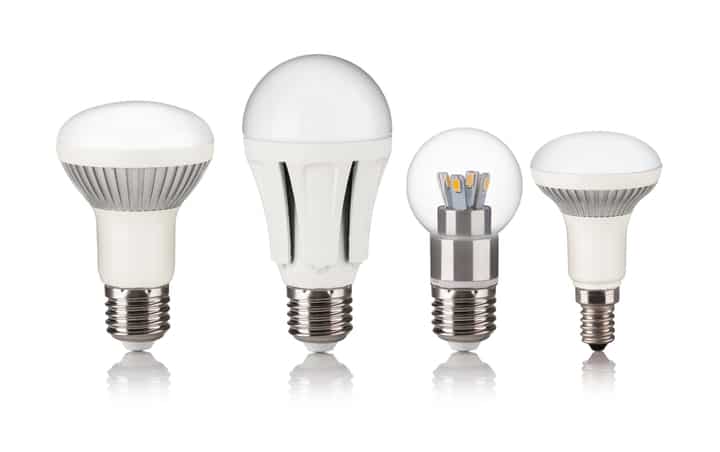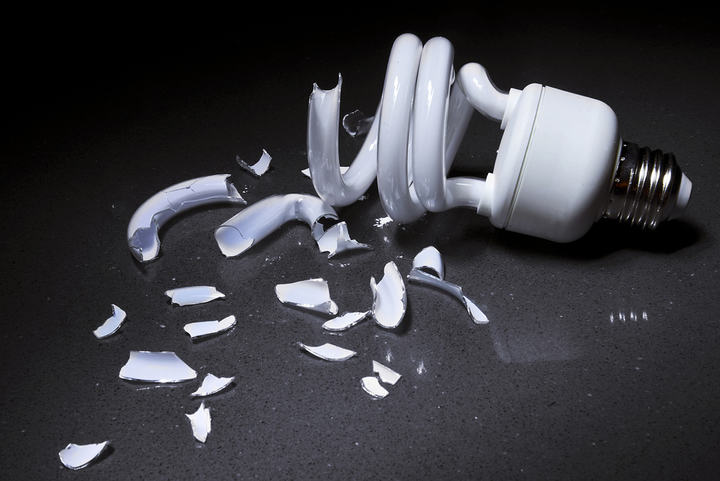Light bulbs really are clever, even those that aren’t the most efficient.
Every part of a light bulb has an important task, and that includes the glass casing. It’s not merely an extra layer to make the bulb look more appealing.
Incandescent bulbs and CFL bulbs cannot function without a glass casing. In incandescent bulbs, the case protects the tungsten filament from oxidizing, while CFL casings keep the essential gases from leaking. LED bulbs don’t need one, but it’s useful for directing the light and keeping the components safe.
In this article I’m going to look at:
- Why incandescent bulbs need a cover, and why it has to be glass
- How LED bulbs don’t rely on one, but why they’re still useful
- How CFL bulbs work, and why a glass case is essential
Can Incandescent Bulbs Function Without The Glass?

The glass casing is vital to an incandescent bulb. If the glass breaks, then technically, the bulb will still work – for an extremely short amount of time (I mean a few seconds).
And it would be dangerous due to the exposed high temperatures. In reality, a broken bulb will burn out almost immediately, and you’ll need to replace it.
Incandescent bulbs contain a tungsten filament – a delicate piece of metal. When a current is passed through the filament, it is heated to a very high temperature – around 2600C or 4500F – which is what then generates the light.
It’s not efficient – most of the energy used generates heat rather than light – but it’s effective at producing light until the filament breaks.
That’s why the casing is glass rather than another material, such as plastic – it needs to be able to resist the very high temperatures. Plastic would quickly melt if used with a light bulb that generates such high temperatures.
What Role Does A Vacuum Play In Filament Bulbs?
There’s a little more to the glass casing with incandescent bulbs than simply withstanding heat. It also serves as a seal to prevent oxygen from reaching the filament.
Tungsten would oxidize extremely quickly, burning out and essentially evaporating if it came into contact with the air.
That’s why most incandescent bulbs contain either a vacuum or an inert gas. Vacuums tend to be used in lower wattage bulbs, but other incandescent bulbs will commonly be filled with argon.
This helps slow down the filament’s evaporation, preserving it for longer and allowing it to be used at higher temperatures.
Any crack in the glass will allow oxygen to reach the filament, destroying it.
If you notice a slight crack in your incandescent bulb that hasn’t stopped it working yet, as it hasn’t completely gone through the glass, you should still remove it immediately and dispose of it.
Can LED Bulbs Be Used Without Glass Or Epoxy Cover?

LED light bulbs are different from incandescent, as they use a light-emitting diode rather than a tungsten filament. When a current passes through the diode, it emits photons, which are the light source.
The diode isn’t temperamental or reactive and can be exposed to the air elements without any issues.
Nor does it require any special gasses or vacuum to continue working.
In theory, an LED light bulb will work perfectly fine without the glass casing. If the case cracks or breaks, then you could, in theory, continue to use it.
So why do LED light bulbs have a glass case?
Well, firstly, they don’t always have a glass case. Sometimes it’ll be an epoxy resin, which is durable without being quite so fragile.
As LEDs don’t create a lot of heat, different materials can be used. There’s no need for it to be a material that can withstand high temperatures.
A cover is used at all is sometimes a design choice – people are used to having light bulbs with a case and may not want to see the exposed components.
For most homes, people want a standard light bulb that looks similar to others they have had before.
They’re also good for general safety – if the bulb was to pop, an epoxy resin LED is shatterproof. It will hold all of the parts together, rather than showering you with broken electrical components.
It keeps everything in one place, which makes disposing of it much simpler.
And sometimes, the case is simply to help direct the light – it may be partially opaque or frosted to help ensure the most effective distribution of the light it creates.
Generally, LED bulbs are really safe even if they’re broken and are easy to dispose of.
Can CFL Bulbs Work If Damaged?

CFL bulbs are different again from both incandescent and LED lights.
A CFL light contains an inert gas such as argon, mixed with a small amount of mercury vapor. When an electric current passes through this gas, it creates ultraviolet light.
This UV light then reactors with a fluorescent coating painted onto the inside of the glass case. As it absorbs the energy, it then emits the light that you can see.
You can probably guess, based on this explanation of how a CFL bulb works. Still, any crack in the glass casing will render a CFL bulb completely useless.
It’s essential for keeping the gas mixture contained. If it leaks, then there is no gas for the electrical current to illuminate.
You must handle a broken CFL bulb carefully. The mercury in a bulb might be a minuscule amount, but it can still be harmful if you don’t give it the proper respect.
If the bulb breaks, open a window to vent the room and be careful not to handle any broken pieces with your bare hands.
You’ll also need to check your local laws on how to dispose of fluorescent lights, as many areas won’t allow you to simply throw them out with your regular garbage. You might need to take it to a recycling center.
Your local environmental regulatory agency will be able to explain your local laws, while the EPA has more details.
Also read: Do LED Bulbs Have Filaments?
Final Words
No matter what type of light bulb you have, you should replace it as soon as possible if you notice a break or crack in the glass casing.
With incandescent and CFL bulbs, a broken case is dangerous, and it’ll also stop the light from working.
The need is less urgent with LEDs, but it’s better to avoid having any kind of broken material that could have sharp edges if it gets worse.
Have you had any nightmares trying to dispose of a broken bulb responsibly or run into any local laws that have made it tricky?
Perhaps you’ve got a story about a shattered bulb nightmare?
Leave your comments below.
Looking for an LED bulb but not sure what type you need?
Check out my free bulb picker and select the right bulb within few clicks.

